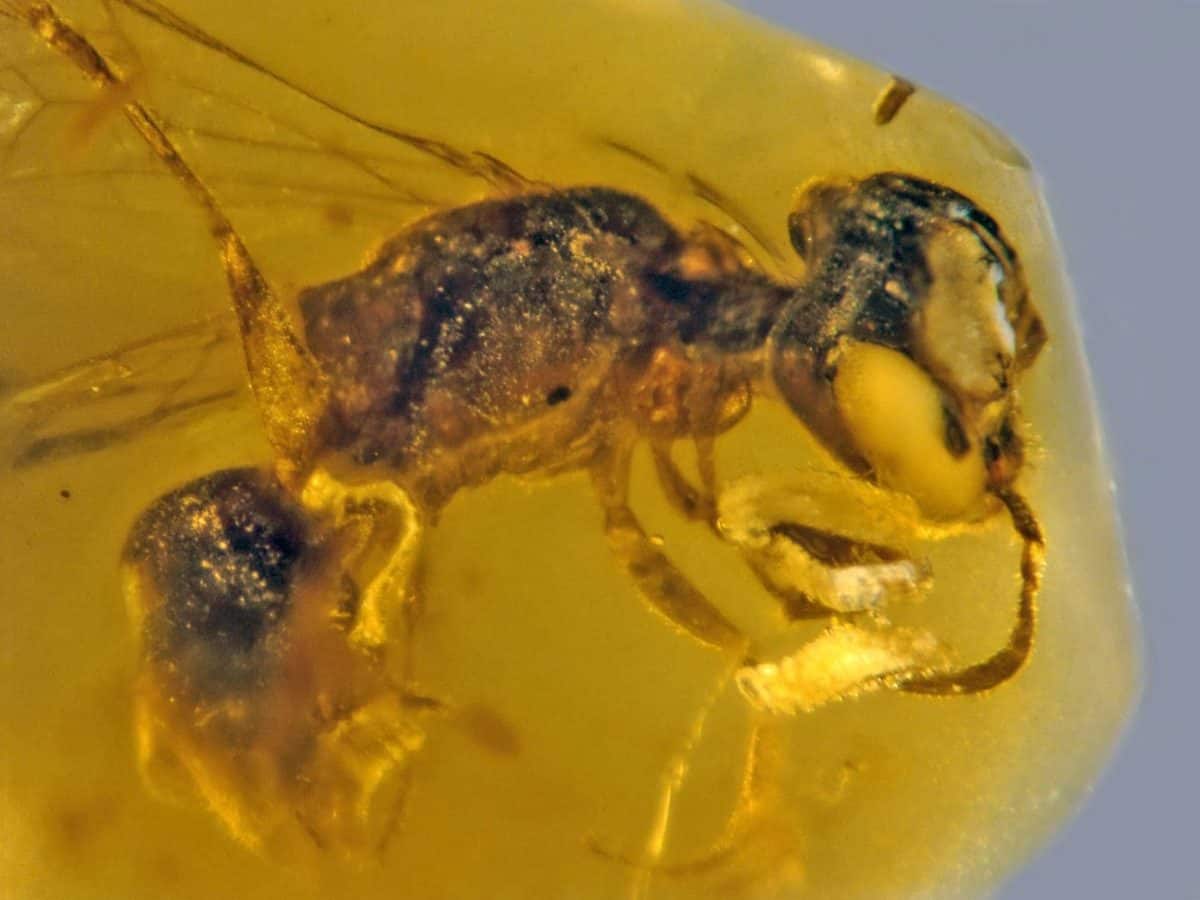
A 100 million year old bee covered in pollen and trapped in amber is the oldest ever evidence of pollination, scientists say.
With parasites clinging to it, the find is also the oldest evidence of bee parasitism that still affects them today.
The female bee from Myanmar was preserved in amber and it is possible that the large number of beetle parasites caused the fossilised bee to accidentally fly into the tree resin, according to the researchers.
Scientists from the United States identified the creature as a new family, genus and species.
The findings were published in BioOne Complete and shines a new light on the early days of bees and a key component in evolutionary history and the diversification of flowering plants.
Bees are pollinators and they aid the reproduction of flowering plants around the globe and are ecologically critical as biodiversity promoters.
They are present in the greatest numbers and they are the only pollinator group that feeds exclusively on nectar and pollen throughout their life cycle.
The mid-Cretaceous bees evolved from apoid wasps, which are carnivores but not much is known about the changes current wasps underwent as they made a dietary transition.
The fossilised bee was classified as Discoscapa apicula part of the family Discoscapidae.
It shares traits with modern bees, including plumose hairs and a rounded pronotal lobe, as well as apoid wasps with their low antennal sockets and certain wing-vein features.
Oregon State University researcher Dr George Poinar Jr. said: “Something unique about the new family that’s not found on any extant or extinct lineage of apoid wasps or bees is a bifurcated scape.
“The fossil record of bees is pretty vast, but most are from the last 65 million years and look a lot like modern bees.
“Fossils like the one in this study can tell us about the changes certain wasp lineages underwent as they became palynivores – pollen eaters.”
Numerous pollen grains on the creature show it had recently been to one or more flowers.
Dr Poinar said: “Additional evidence that the fossil bee had visited flowers are the 21 beetle triungulins – larvae – in the same piece of amber that were hitching a ride back to the bee’s nest to dine on bee larvae and their provisions, food left by the female.
“It is certainly possible that the large number of triungulins caused the bee to accidentally fly into the resin.”